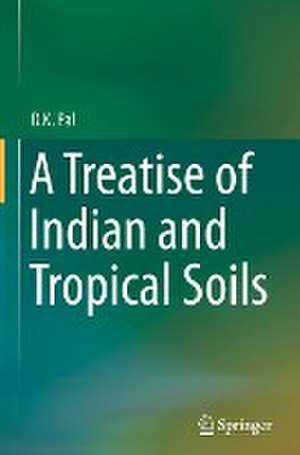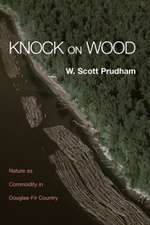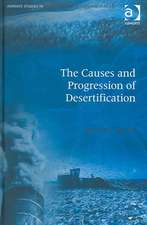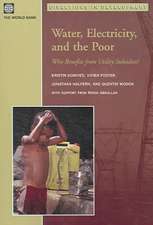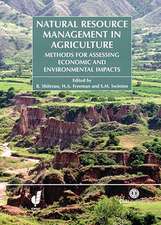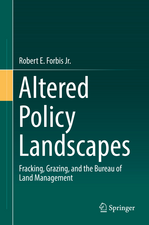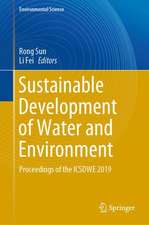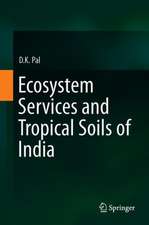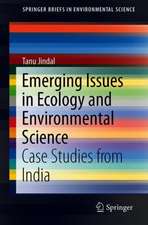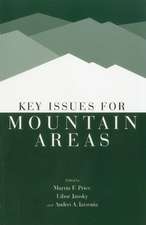A Treatise of Indian and Tropical Soils
Autor D.K. Palen Limba Engleză Hardback – 20 dec 2016
The book showcases the research contributions on pedology, geomorphology, mineralogy, micromorphology and climate change collected from the literature on three major soil types: shrink-swell soils, red ferruginous (RF) soils and the soils that occur in the tropical environments of the Indo-Gangetic Plains (IGP). It also provides insights into several aspects of five pedogenetically important soil orders like Alfisols, Mollisols, Ultisols, Vertisols and Inceptisols found in tropical Indian environments.
Documenting the significance of minerals in soils and their overall influence in soil science in terms of pedology, paleopedology, polygenesis and edaphology, it provides a knowledge base that is critical when attempting to bridge the gap between food production and populationgrowth.
| Toate formatele și edițiile | Preț | Express |
|---|---|---|
| Paperback (1) | 357.23 lei 38-44 zile | |
| Springer International Publishing – 30 apr 2018 | 357.23 lei 38-44 zile | |
| Hardback (1) | 394.51 lei 3-5 săpt. | |
| Springer International Publishing – 20 dec 2016 | 394.51 lei 3-5 săpt. |
Preț: 394.51 lei
Nou
Puncte Express: 592
Preț estimativ în valută:
75.49€ • 78.82$ • 62.48£
75.49€ • 78.82$ • 62.48£
Carte disponibilă
Livrare economică 15-29 martie
Preluare comenzi: 021 569.72.76
Specificații
ISBN-13: 9783319494388
ISBN-10: 3319494384
Pagini: 180
Ilustrații: XIV, 180 p. 44 illus., 18 illus. in color.
Dimensiuni: 155 x 235 mm
Greutate: 0.57 kg
Ediția:1st ed. 2017
Editura: Springer International Publishing
Colecția Springer
Locul publicării:Cham, Switzerland
ISBN-10: 3319494384
Pagini: 180
Ilustrații: XIV, 180 p. 44 illus., 18 illus. in color.
Dimensiuni: 155 x 235 mm
Greutate: 0.57 kg
Ediția:1st ed. 2017
Editura: Springer International Publishing
Colecția Springer
Locul publicării:Cham, Switzerland
Cuprins
Introduction.- Chapter1: Indian tropical soils: An overview.- Chapter 2: Cracking clay soils (Vertisols): Pedology, mineralogy and taxonomy.- Chapter 3: Red ferruginous soils: Pedology, mineralogy and taxonomy.- Chapter 4: Soils of the Indo-Gangetic Alluvial Plains: Historical perspective, soil-geomorphology and pedology in response to climate change and neotectonics.- Chapter 5: Conceptual models on tropical soil formation.- Chapter 6: Land and soil degradation and remedial measures.-Chapter 7: Clay and other minerals in soils and sediments as evidence of climate change.- Chapter 8: Linking minerals to selected soil bulk properties.- Chapter 9: Importance of pedology of Indian tropical soils in their edaphology.- Chapter10: Summary and concluding remarks.
Notă biografică
Dr. D.K. Pal obtained M.Sc. (Ag) degree in Agricultural Chemistry with specialization in Soil Science in 1970, and earned his Ph.D. degree in Agricultural Chemistry in 1976 from the Calcutta University. He worked as a DAAD Post-Doctoral Fellow at the Institute of Soil Science, University of Hannover, West Germany during 1980-81. He worked as the Principal Scientist and Head, Division of Soil Resource Studies, ICAR-NBSS & LUP, Nagpur, India and as a visiting scientist at the International Crops Research Institute for the Semi-Arid Tropics, Telangana.
Dr. Pal’s work on the major soil types of tropical environments of India has expanded the basic knowledge in pedology, paleopedology, soil taxonomy, soil mineralogy, soil micromorphology, and edaphology. He also created an internationally recognized school of thought on the development and management of the Indian tropical soils, and has mentored several M.Sc. and Ph.D. students of Land Resource Management. He has delivered numerous prestigious invited lectures at national and international meets and served as a reviewer for many journals of national and international repute, and contributed reviews and book chapters for national and international publishers. Dr. Pal is the life member of many professional national societies in soil and earth science, and has also been conferred with many national awards and fellowships.
Dr. Pal’s work on the major soil types of tropical environments of India has expanded the basic knowledge in pedology, paleopedology, soil taxonomy, soil mineralogy, soil micromorphology, and edaphology. He also created an internationally recognized school of thought on the development and management of the Indian tropical soils, and has mentored several M.Sc. and Ph.D. students of Land Resource Management. He has delivered numerous prestigious invited lectures at national and international meets and served as a reviewer for many journals of national and international repute, and contributed reviews and book chapters for national and international publishers. Dr. Pal is the life member of many professional national societies in soil and earth science, and has also been conferred with many national awards and fellowships.
Textul de pe ultima copertă
This book discusses how to apply the basic principles of pedology to the tropical soils of the Indian subcontinent, with an emphasis on ways to enhance crop productivity.
The book showcases the research contributions on pedology, geomorphology, mineralogy, micromorphology and climate change collected from the literature on three major soil types: shrink-swell soils, red ferruginous (RF) soils and the soils that occur in the tropical environments of the Indo-Gangetic Plains (IGP). It also provides insights into several aspects of five pedogenetically important soil orders like Alfisols, Mollisols, Ultisols, Vertisols and Inceptisols found in tropical Indian environments.
Documenting the significance of minerals in soils and their overall influence in soil science in terms of pedology, paleopedology, polygenesis and edaphology, it provides a knowledge base that is critical when attempting to bridge the gap between food production and population growth.
The book showcases the research contributions on pedology, geomorphology, mineralogy, micromorphology and climate change collected from the literature on three major soil types: shrink-swell soils, red ferruginous (RF) soils and the soils that occur in the tropical environments of the Indo-Gangetic Plains (IGP). It also provides insights into several aspects of five pedogenetically important soil orders like Alfisols, Mollisols, Ultisols, Vertisols and Inceptisols found in tropical Indian environments.
Documenting the significance of minerals in soils and their overall influence in soil science in terms of pedology, paleopedology, polygenesis and edaphology, it provides a knowledge base that is critical when attempting to bridge the gap between food production and population growth.
Caracteristici
Applies the basic principles of pedology to the soils of the tropical environments of the Indian subcontinent, with an emphasis on ways to enhance crop productivity Documents the significance of minerals in soils and their overall influence in terms of pedology, paleopedology, polygenesis, and edaphology Highlights methodologies for enhancing the productivity of tropical soils in the context of climate change in India Includes supplementary material: sn.pub/extras
